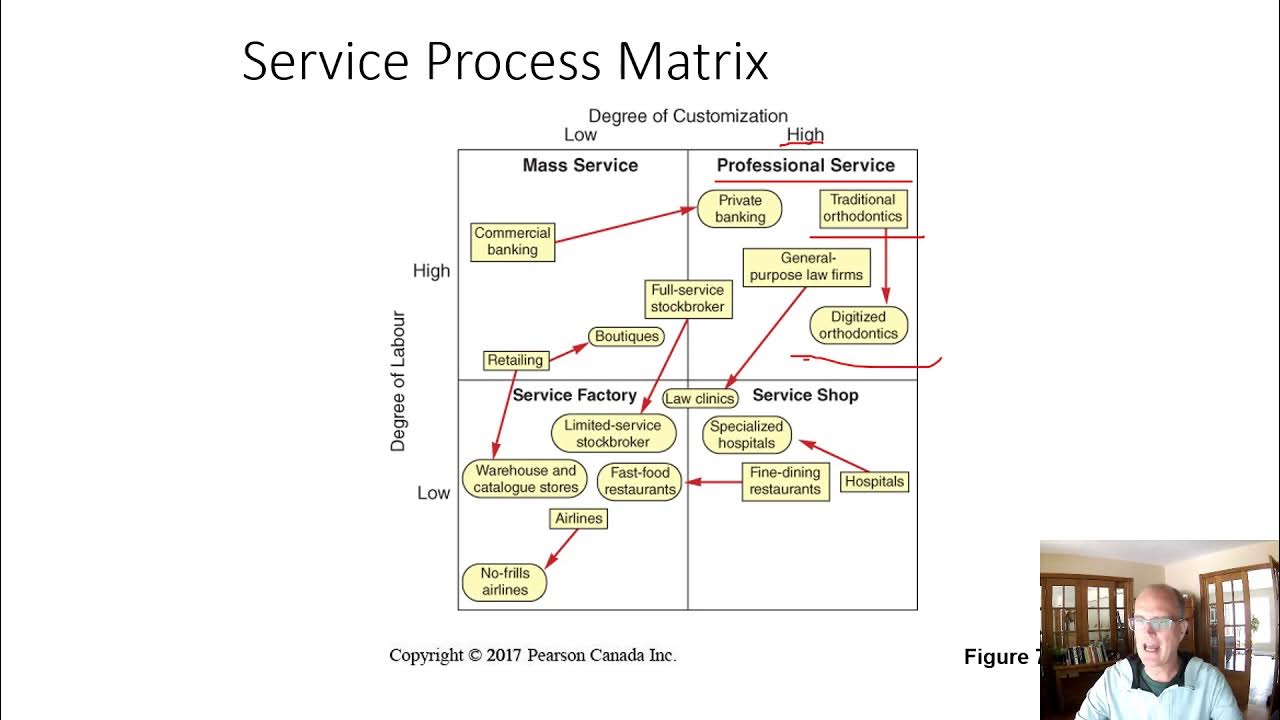The Chain of Responsibility Pattern Explained & Implemented | Behavioral Design Patterns | Geekific
Summary
TLDRThis video introduces the Chain of Responsibility design pattern using a relatable customer service scenario. It illustrates how requests are handled by a sequence of operators, each responsible for specific tasks, similar to handlers in the pattern. The speaker then applies this concept to an authentication app, detailing the implementation of handlers that verify user credentials and roles. By demonstrating how handlers can process or pass along requests, the video emphasizes the pattern's flexibility and effectiveness in managing complex workflows, making it a valuable tool in software design.
Takeaways
- 😀 The Chain of Responsibility is a behavioral design pattern that allows multiple handlers to process a request in sequence.
- 📞 The scenario of dealing with a bank's customer service illustrates how requests can be passed between operators until resolved.
- 🔗 Each handler in the chain can either process the request or pass it along to the next handler, promoting loose coupling.
- 🔍 Concrete handlers implement the specific logic for processing requests, making them self-contained and focused on their individual tasks.
- 📋 A BaseHandler class can be used to encapsulate common functionality, such as storing a reference to the next handler.
- 👤 The authentication example demonstrates how the pattern can be applied in user login processes, validating credentials step-by-step.
- 🔑 The implementation involves creating classes like UserExistsHandler, ValidPasswordHandler, and RoleCheckHandler to manage different checks.
- 🔄 The client can trigger any handler in the chain, allowing for flexible request processing and management.
- ⚙️ Handlers can be dynamically added, removed, or reordered, providing adaptability in the application's logic.
- ✨ This pattern is particularly useful in scenarios where a series of actions or checks must be performed, enhancing both clarity and maintainability.
Q & A
What is the main concept introduced in the video?
-The main concept introduced in the video is the Chain of Responsibility Design Pattern, which allows multiple handlers to process requests in a decoupled manner.
How does the Chain of Responsibility relate to customer service scenarios?
-In customer service scenarios, like dealing with a bank, the Chain of Responsibility can be seen when a customer is transferred between multiple operators, each responsible for specific tasks, until the issue is resolved.
What are the key components of the Chain of Responsibility pattern?
-The key components include handlers (concrete classes processing requests), a base handler (optional class with common functionality), and a client that initiates requests and constructs the chain.
What are concrete handlers in the context of the example provided?
-Concrete handlers in the example include UserExistsHandler, ValidPasswordHandler, and RoleCheckHandler, each responsible for specific checks during user authentication.
What role does the BaseHandler class play in the Chain of Responsibility?
-The BaseHandler class contains common boilerplate code for handlers and maintains a reference to the next handler in the chain, facilitating the passing of requests.
How does the Client interact with the Chain of Responsibility?
-The Client can send requests to any handler in the chain, not just the first one, and it composes the chain of handlers based on application logic.
What happens if a handler cannot process a request?
-If a handler cannot process a request, it passes the request to the next handler in the chain until either a handler processes it or the end of the chain is reached.
Why is the Chain of Responsibility pattern useful for dynamic applications?
-The pattern is useful for dynamic applications because it allows handlers to be added, removed, or reordered at runtime, providing flexibility in handling requests.
What is an example of a decision that a handler must make when receiving a request?
-A handler must decide whether to process the request based on specific conditions or pass it along to the next handler in the chain.
What are the benefits of using the Chain of Responsibility pattern in software design?
-Benefits include decoupling request processing from specific handlers, enhancing modularity, improving maintainability, and allowing for dynamic configuration of the processing order.
Outlines

此内容仅限付费用户访问。 请升级后访问。
立即升级Mindmap

此内容仅限付费用户访问。 请升级后访问。
立即升级Keywords

此内容仅限付费用户访问。 请升级后访问。
立即升级Highlights

此内容仅限付费用户访问。 请升级后访问。
立即升级Transcripts

此内容仅限付费用户访问。 请升级后访问。
立即升级5.0 / 5 (0 votes)






